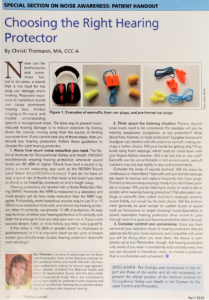Since 2020 began, wearing masks has become a part of our day-to-day lives, from stores and public transit, to restaurants and other public places. Unfortunately, masks prevent us from being able to read facial expressions or lips, making it even harder to understand what others are say – especially for people living with hearing loss. Here are some of the challenges masks present and ways to combat them.
How masks impact speech understanding
While masks block viruses, pollutants and particulates, they also undermine people’s ability to hear speech clearly. Most masks hide the lips, making lip reading impossible. While there are some masks available with a transparent area over the mouth to allow for lip reading, all masks end up block sound and cause people to sound more muffled. Masks essentially become low-pass filters, which significantly dampens higher frequency sounds that are crucial for speech understanding. As well, with the growing popularity of cloth masks, the myriad of styles and materials impact sound clarity to different extents. How can we minimize the impact of masks on audibility?
Using a mask program for better speech understanding
Unitron’s TrueFit fitting software offers the ability to create a manual program that includes features like soft speech lift and speech enhancement. These features work together with minor high frequency gain adjustments to make it easier to hear speech better.
As well, remote adjustments allow our clinicians to adjust settings at the client’s convenience. Not only can it more accurately reflect the client’s lifestyle and environments, remote adjustment provides flexibility and reduces the number of clinic visits. Clients can avoid the risk of exposure from travelling to the clinic in person.
Connect an accessory
For one-on-one conversations, PartnerMic is ideal for noisy environments when the speaker is at a distance. It can send the speaker’s voice directly to your hearing aids from up to 25 metres (about 80 feet) away. Additionally, it can also easily be used to maintain physical distance while in the clinic. Individuals with iPhones can also use the Live Stream function, an accessibility shortcut that effectively turns their phone into a remote microphone and sends sound collected from the phone microphone directly to the client’s hearing aids.
Tips for wearing masks with hearing aids
Similar to eye glass frames, certain types of mask can compete for space behind the ear with some hearing aid styles. No one wants to send a hearing aid flying when taking of a mask, and comfort is essential for wearing both.
Here are some tips and suggestions for wearing masks and hearing aids together:
- Try a different style of mask. Masks that have ties or elastics that loop around the back the head, rather than around the ears, can steer clear of behind-the-ear (BTE) and receiver-in-canal (RIC) hearing aid styles
- Practice putting masks on and taking them off at home while wearing hearing aids to make sure everything stays in place.
- Wear a mask around the home with the hearing aids to make sure they will be comfortable for longer periods of time.
Masks are going to be part of our daily lives for quite some time, but there are ways to ensure you hear your best while staying safe.



